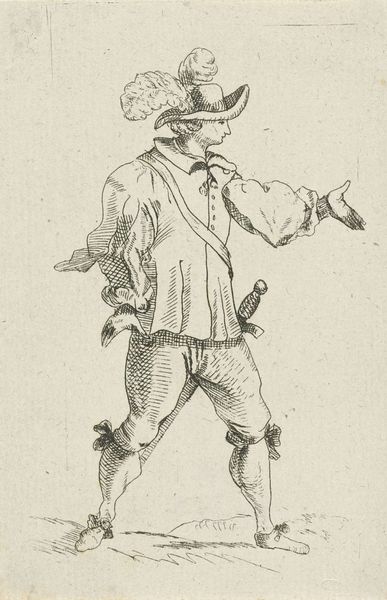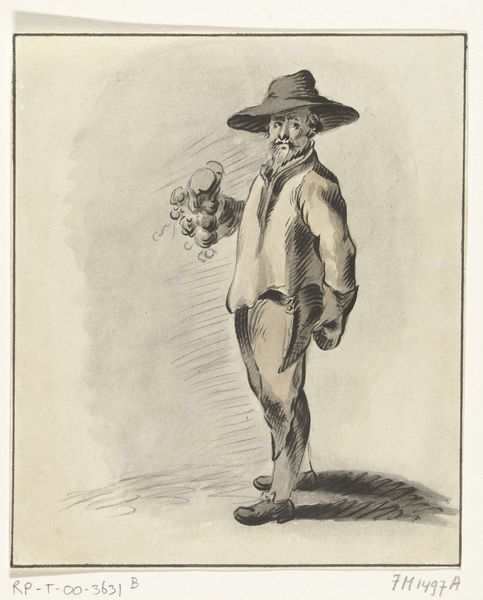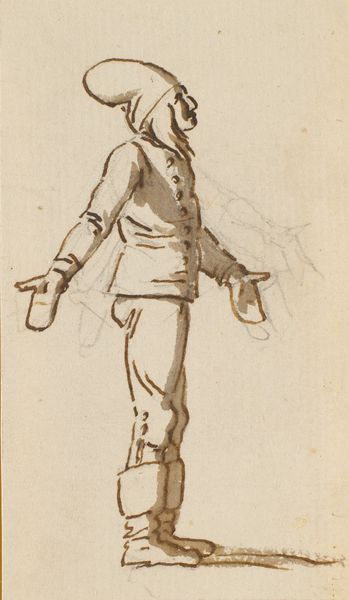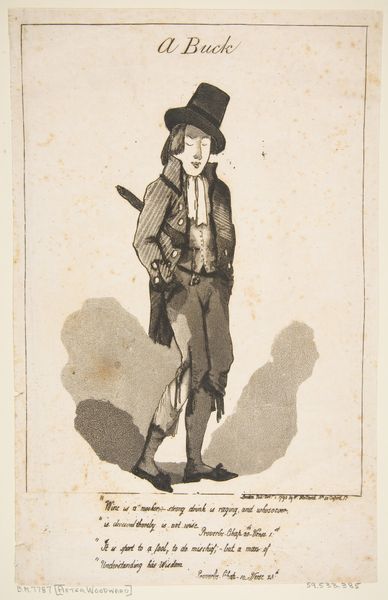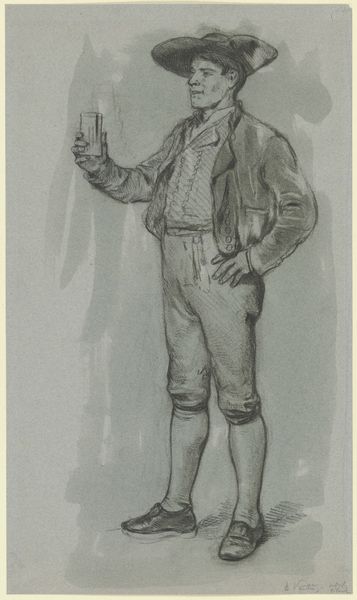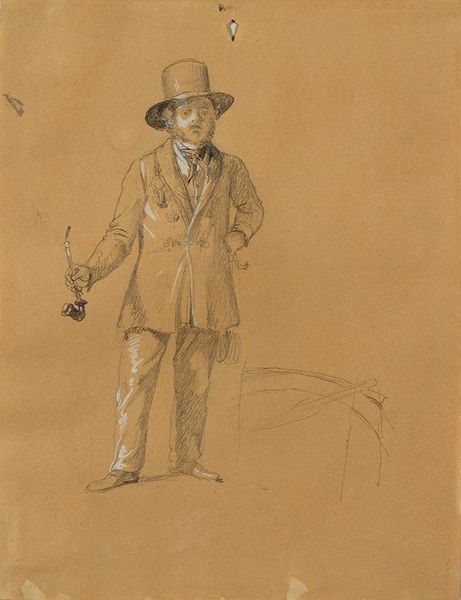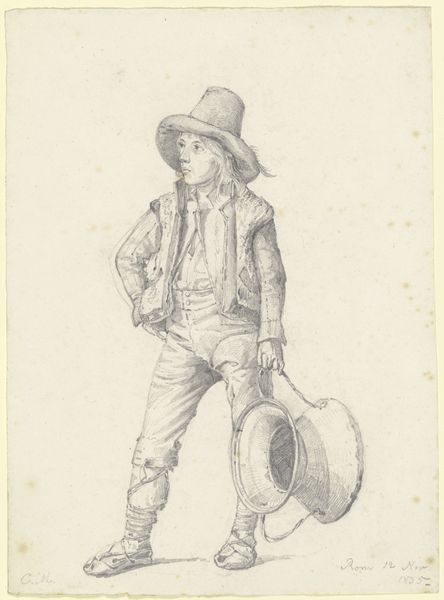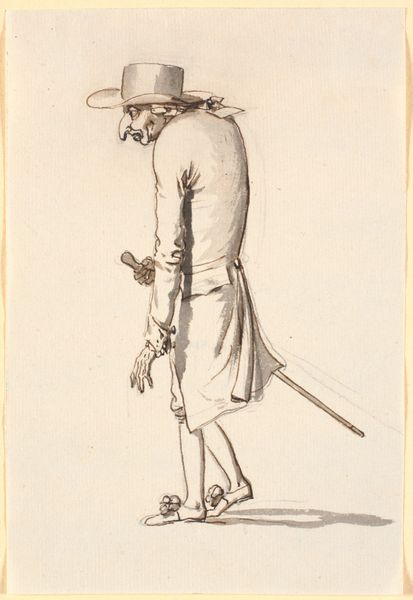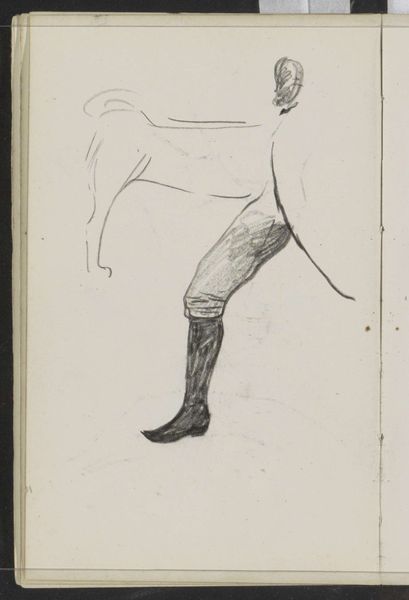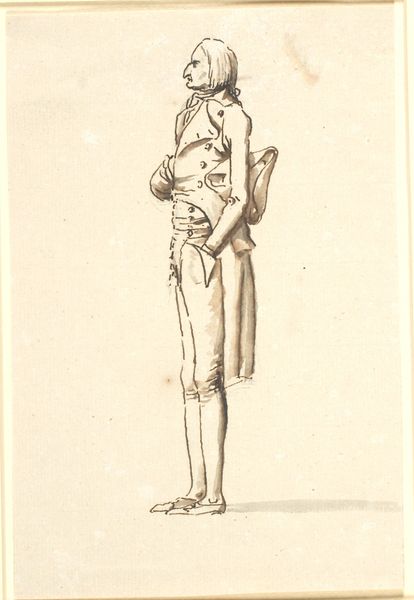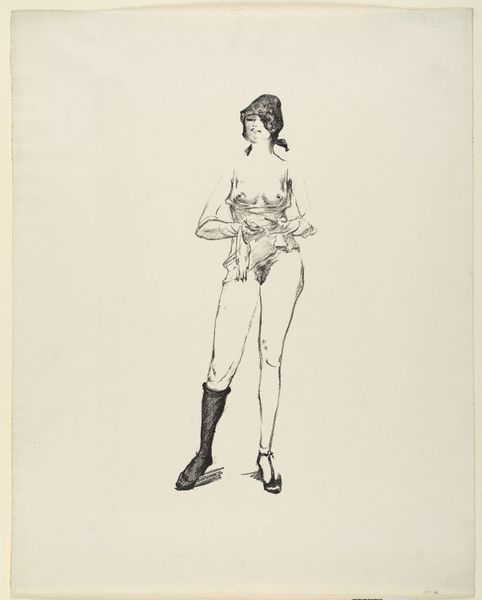
Dimensions: support: 318 x 259 mm
Copyright: © Margaret F. Harrison | CC-BY-NC-ND 4.0 DEED, Photo: Tate
Curator: This drawing is entitled "Son of Rob Roy," created by Margaret Harrison in 1971. The figure’s interesting use of objects immediately sets a playful, yet confrontational tone. Editor: It certainly does. The textures are quite striking—the soft rendering of the fur vest contrasts sharply with the hard lines defining the guns and boots. Curator: Precisely. Harrison’s piece arrived during a pivotal moment in second-wave feminism, reflecting a desire to challenge the conventional, hyper-masculine depictions pervasive in popular culture. Editor: So, we see this figure who ostensibly should embody virility and power, but Harrison destabilizes these ideals through the unexpected juxtaposition of objects as phallic symbols, a subversive twist to the classic Western gunslinger. Curator: Indeed, Harrison subtly deconstructs these symbols, revealing their inherent absurdity. The work becomes less about the character itself and more about the societal narratives we construct around gender and power. Editor: The piece also evokes a sense of vulnerability; the figure is undeniably exposed, stripped of the armor of traditional masculinity. A fascinating statement on the power of imagery. Curator: Absolutely, it compels us to reconsider the power dynamics inherent in representation. Editor: A complex and layered work, Harrison invites us to question the very foundations of our cultural narratives.
Comments
tate 6 months ago
⋮
http://www.tate.org.uk/art/artworks/harrison-son-of-rob-roy-t12825
Join the conversation
Join millions of artists and users on Artera today and experience the ultimate creative platform.
tate 6 months ago
⋮
Harrison was one of the founders of the Women’s Liberation Art Group in 1970. She explores gender identity and stereotyping as well as broader issues affecting women such as equal pay, homeworkers’ rights, domestic abuse and rape. In these works the artist uses humour to explore male preoccupations, the way the media portrays women, and pop art. Harrison describes them as ‘anti-pornographic’ because they were drawn by a woman. They were first shown in a solo exhibition in 1971 that was closed by police after one day for being ‘indecent’. Gallery label, July 2017
